Military of Ukraine
| Armed Forces of Ukraine Збройні сили України |
|
|---|---|
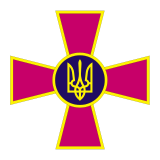 Emblem of the Armed Forces |
|
| Founded | December 12, 1991 |
| Service branches | Ground Forces Air Force Navy |
| Leadership | |
| Supreme Commander-in-chief | Viktor Yanukovych |
| Minister of Defence | Yuriy Yekhanurov |
| Chief of the General Staff & Commander-in-Chief | General of Army of Ukraine Ivan Svyda |
| Manpower | |
| Military age | 18 |
| Conscription | 12 month (GF, AF) 18 month (Navy) |
| Available for military service |
11,457,562, age 16-49 (2008 est.[1]) |
| Fit for military service |
7,141,814, age 16-49 (2008 est.[1]) |
| Reaching military age annually |
288,605 (2008 est.[1]) |
| Active personnel | 149,000 (ranked 36) |
| Reserve personnel | 1,000,000 |
| Deployed personnel | 562 |
| Expenditures | |
| Budget | $1.52 billion (€1.12 billion)(2009) 11.65 billion UAH[2] |
| Percent of GDP | 1.11[3] |
| Industry | |
| Domestic suppliers | Defence Companies of Ukraine |
| Related articles | |
| Ranks | Military ranks of Ukraine |
 Flag of the Armed Forces |
|
The Armed Forces of Ukraine (Ukrainian: Збройні сили України (ЗСУ) Zbroyni Syly Ukrayiny, (ZSU)) are the military of Ukraine.
Ukraine's stated national policy is Euro-Atlantic integration, with both NATO and the European Union. Ukraine has a "Distinctive Partnership" with NATO and has been an active participant in Partnership for Peace exercises and in peacekeeping in the Balkans. This close relationship with NATO has been most apparent in Ukrainian cooperation and combined peacekeeping operation with its neighbor Poland, in Kosovo. Ukrainian serviceman also serve under NATO command in Iraq, Afghanistan and in Operation Active Endeavour.[4] Current President Viktor Yanukovych considers the current level of co-operation between Ukraine and NATO sufficient.[5] Yanukovich is against Ukraine joining NATO.[6] His predecessor Viktor Yushchenko had asked for Ukrainian membership early 2008.[7][8] During the 2008 Bucharest summit NATO declared that Ukraine will become a member of NATO, whenever it wants and when it would correspond the criteria for the accession.[5]
The current Chief of the General Staff of the Armed Forces of Ukraine is General of Army of Ukraine Ivan Svyda (he submitted a letter of resignation on May 29, 2010[9]).
Military units of other states participate in multinational military exercises with Ukrainian forces in Ukraine regulary, including U.S. military forces.[10] MAny of these exercises are held under the NATO co-operation programme Partnership for Peace.
Contents |
History
Ukraine has a very long and honorable military tradition stretching back centuries. Some facets include the actions of the Ukrainian Military Organization and post World War II insurgency against Soviet control.
As the Soviet Union dissolved in 1990 and 1991, 780,000 Soviet military personnel remained located in Ukraine’s three military districts. This mass was not an army but a force grouping, without a national Ministry of Defence, a General Staff or central organs of command and control. 'This grouping, its inventory of equipment and its officer corps were designed for one purpose: to wage combined arms, coalition, offensive (and nuclear) warfare against NATO on an external front.'[11] At that time, the armed forces of Ukraine included land force formations, one rocket army, four Air Force armies, a separate air defense army, and the Black Sea Fleet. Altogether, when established, the Armed Forces of Ukraine included more than 350 ships, 1500 combat aircraft, and 1272 strategic nuclear war-heads of intercontinental ballistic missiles.
On August 24, 1991, the Ukrainian parliament, the Verkhovna Rada, enacted a resolution to take jurisdiction over all formations of the armed forces of the Soviet Union stationed on Ukrainian soil, and to establish one of the key agencies, the Ukrainian Ministry of Defence.[12]
Inherent in the process of creating a domestic military were political decisions by the Ukrainian leadership regarding the country's non-nuclear and international status. Included in this was the definition, agreement and ratification of the Treaty on Conventional Armed Forces in Europe (CFE) which not only established the maximum level of armament for each republic of the former USSR, but also a special ceiling for the so-called CFE "Flank Region". Included in the region were Ukraine's Mykolaiv, Kherson, Zaporizhia Oblasts, and the Autonomous Republic of Crimea. Also key for the creation of a Ukrainian military was the 1992 Tashkent Treaty, which laid out aspirations for a Commonwealth of Independent States military that would prove impossible to develop because the former republics of the USSR all wished to go their own way, ripping the intricate Soviet military machine into pieces.
The military and security forces, including the Armed Forces of Ukraine and a number of independent "militarized institutions" (paramilitary forces) are under the command of the President of Ukraine, and subject to oversight by a permanent Verkhovna Rada parliamentary commission. Ukrainian military tactics and organization are heavily dependent on Cold War tactics, and former Soviet Armed Forces organization. Ukraine has however been pursuing a policy of independence from Russian dominance, and have taken steps towards closer ties with the West.
However, Ukraine retains tight military relations with Russia, mostly inherited from the common Soviet history. Common use of naval bases in Crimea and joint air defense efforts are the most intense branches of such cooperation. This cooperation is a permanent irritant in bilateral relations. But the country is unable to drop such ties quickly, being economically dependent on Moscow.
Plagued at times by hostile relations with Russia following the breakup of the Soviet Union, Ukraine has been steadfastly trying to develop its own independent military industry. Notable results of this effort are the Ukrainian-built T-84 main battle tank, currently in service, and the aircraft manufacturer Antonov. Ukraine received about 30% of the Soviet military industry, which included between 50 and 60 percent of all Ukrainian enterprises, which employed 40% of its working population. Ukraine was, and still remains, a leader in missile-related technology.[13] Especially navigation electronics for combat vessels and submarines, guidance systems, and radar for military jets. Tough competition in the world's weapons market obliged Ukraine to consider exporting arms to politically unstable or even aggressive regimes. Ukraine build its own connections in arms exporting. The first contracts on weapons deliveries to Iran, signed in the middle of 1992, caused negative reactions in the West, particularly from the United States federal government.
Several unfortunate accidents involving the Armed Forces have occurred since 1992, including the crash of an Air Force Su-27 in the Sknyliv airshow disaster of 2002 and the accidental shooting down of Siberia Airlines Flight 1812 in October 2001.
Organization
|
|||||||||||||||||||||||
The Ukrainian armed forces are largely made up of conscripts. The total personnel (including 40,000 civilian workers) numbers at the end of 2010 will be 200,000.[14] The branch structure is as follows:
Ukraine maintains a number of Guards units, tracing their traditions from Soviet Armed Forces service. A list can be seen at List of guards units of Ukraine.
Women make almost 13% of the armed forces (18.000 persons). There are few female high officers, 2,9% (1.202 women).[17] Contractual military service counts for almost 44% of women. However, this is closely linked to the low salary of such positions: men refuse to serve in these conditions when women accept them.[17]
Arms Control and Disarmament
Following the breakup of the Soviet Union, Ukraine inherited two divisions of the Strategic Rocket Forces' 43rd Rocket Army (HQ Vinnitsa), the 19th Rocket Division (Khemilnitskiy) (90? UR-100N/SS-19/RS-18) and the 46th Rocket Division at Pervomaisk, Mykolaiv Oblast, equipped with 40 SS-19, and 46 silo-mounted RT-23 Molodets/SS-24s.[18] Ukraine voluntarily gave up these and its other nuclear weapons during the early 1990s. This was the first time in human history that a country voluntarily gave up the use of strategic nuclear weapons, though the Republic of South Africa was destroying its small tactical nuclear weapons program at about the same time.

Ukraine has plentiful amounts of highly enriched uranium, which the United States wanted to buy from the Kharkiv Institute of Physics and Technology. Ukraine also has two uranium mining and processing factories, a heavy water plant, a technology for making electronic to determine the isotopic composition of fissionable materials. Ukraine has deposits of uranium that are among the world’s richest. In May 1992, Ukraine signed the Strategic Arms Reduction Treaty (START) in which the country agreed to give up all nuclear weapons, and to join the Nuclear Non-Proliferation Treaty as a non-nuclear weapon state. Ukraine ratified the treaty in 1994, and as of January 1, 1996, no military nuclear equipment or materials remained on Ukrainian territory.
On 13 May 1994, the United States and Ukraine signed a Memorandum of Understanding on the Transfer of Missile Equipment and Technology. This agreement committed Ukraine to the Missile Technology Control Regime (MTCR) by controlling exports of missile-related equipment and technology according to the MTCR Guidelines.
Recent operations
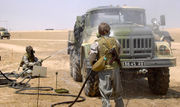
Ukraine has been playing an increasingly larger role in peacekeeping operations. Since 1992, over 30,000 soldiers took part in missions in former Yugoslavia (Bosnia and Herzegovina, Croatia, Eastern Slavonia, Serbia/Kosovo), Middle East (Southern Lebanon, Kuwait, Iraq), African Continent (Angola, Sierra Leone, Liberia).[19]
Since 1997, Ukraine has been closely working with NATO, and especially Poland. A Ukrainian unit was deployed in Iraq, as part of the multinational force in Iraq under Polish command. Ukrainian troops are also deployed as part of the Ukrainian-Polish Battalion (UKRPOLBAT) in Kosovo. The total Ukrainian military deployment around the world as of 1 August, 2009 is 540 servicemen participating in 8 peacekeeping missions.[19]
The first battle of a regular formation of the Ukrainian Armed Forces happened on April 6, 2004 in Kut, Iraq, when the Ukrainian peacekeeping contingent was attacked by militants of the Mahdi Army. The Ukrainians took fire, and over several hours held the objectives they had been assigned to secure.[20]
Deployment outside Ukraine
| Armies of Ukraine |
|---|
|
|
|
|
|
|
|
Deployments as of November 2009:
 Afghanistan: ISAF (PRT CHAGHCHARAN) - 10 Officers (3 medical officers)[19]
Afghanistan: ISAF (PRT CHAGHCHARAN) - 10 Officers (3 medical officers)[19]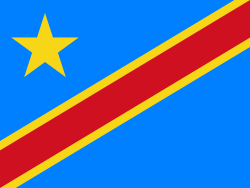 Democratic Republic of the Congo: (MONUC) - 3 Individual Police, 11 Experts on Mission[19][21]
Democratic Republic of the Congo: (MONUC) - 3 Individual Police, 11 Experts on Mission[19][21]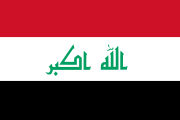 Iraq (NTM-I): - 8 officers[19][22]
Iraq (NTM-I): - 8 officers[19][22]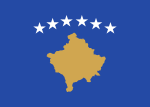 Kosovo: (KFOR) - 179 Soldiers[19][23]
Kosovo: (KFOR) - 179 Soldiers[19][23] Kosovo: (UNMIK) - 1 Military Liaison Component Chief of Staff, 1 liaison officer[19][21]
Kosovo: (UNMIK) - 1 Military Liaison Component Chief of Staff, 1 liaison officer[19][21]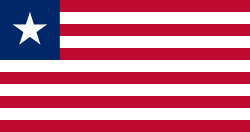 Liberia: (UNMIL) - 300 Contingent Troops, 19 Individual Police, 2 Experts on Mission[19][21]
Liberia: (UNMIL) - 300 Contingent Troops, 19 Individual Police, 2 Experts on Mission[19][21]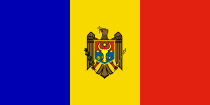 Moldova: (Transnistria) - 10 Military Observers[19]
Moldova: (Transnistria) - 10 Military Observers[19]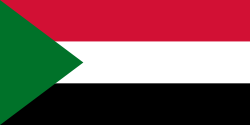 Sudan: (UNMIS) - 19 Individual Police, 11 Experts on Mission[19][21]
Sudan: (UNMIS) - 19 Individual Police, 11 Experts on Mission[19][21]
Other militarized institutions of Ukraine
Ukraine's militarized institutions independent from Armed Forces of Ukraine include:
- Internal Troops (Ministry of Internal Affairs): 33,300 (including 600 civilian workers)[24]
- Motorized military troops of Militsiya (Ministry of Internal Affairs)[25]
- Border Guard: 50,000 (including 8,000 civilian workers)[26]
- Ukrainian Sea Guard — the coast guard within the State Border Guard Service of Ukraine
- Various military troops of the SBU (no generic name)
- Civil Defence Forces (Ministry of Emergency Situations): 10,218 (including 668 civilian workers)[27]
- Special Transportation Service of Ukraine — (Ministry of Transportation and Communications)[28]
Although not components of the Armed Forces, these militarized institutions are supposed to fall under Armed Forces' command during wartime.
Military Holidays
These are the professional military holidays of the Ukrainian Armed Forces.[29]
- February 23 - The Defender Day
- July 8 - The Air Defence Day
- August 1 - The Navy Day
- August 2 - The Airmobile Forces Day
- August 8 - The Signal troops Day
- September 7 - The Day of Military Intelligence
- September 9 - The Day of Armour
- September 14 - The mobilization serviceman Day
- October 29 - The Day of finance officers
- November 3 - The Rocket Forces and Artillery Day
- November 3 - The Day of Engineers
- December 6 - The Armed Forces Day; festive fireworks and salutes take place in various cities in Ukraine[30]
- December 12 - The Day of Ground Forces
- December 23 - The Day of all level operational control structures servicemen.
Notes
- ↑ CIA World Factbook, Military of Ukraine
- ↑ Ukrainian Armed Forces White Book
- ↑ (Ukrainian) Financial amount received by military is 1.11%
- ↑ Новини Управління Прес-служби МО
- ↑ 5.0 5.1 NATO confirms readiness for Ukraine's joining organization, Kyiv Post (April 13, 2010)
- ↑ Yanukovich vows to keep Ukraine out of NATO, Reuters (January 7, 2010)
- ↑ Bush to back Ukraine's Nato hopes, BBC News (April 1, 2008)
- ↑ NATO membership for Georgia and Ukraine held off, BBC (April 4, 2008)
- ↑ Chief of General Staff Svyda resigns, Kyiv Post (May 29, 2010)
- ↑ Parliament approves admission of military units of foreign states to Ukraine for exercises, Kyiv Post (May 18, 2010)
- ↑ James Sherr, 'Ukraine's Defence Reform: An Update', Conflict Studies Research Centre, 2002
- ↑ The history of the Armed Forces of Ukraine
- ↑ Ukraine Special Weapons
- ↑ (in Ukrainian) Ukrainian Armed Forces 2009. February 23, 2010. p. 78. http://www.mil.gov.ua/files/white_book/WB2009_ukr.pdf. Retrieved February 25, 2010.
- ↑ 15.0 15.1 (in Ukrainian) Ukrainian Armed Forces 2009. February 23, 2010. p. 79. http://www.mil.gov.ua/files/white_book/WB2009_ukr.pdf. Retrieved February 25, 2010.
- ↑ (in Ukrainian) Ukrainian Armed Forces 2009. February 23, 2010. p. 80. http://www.mil.gov.ua/files/white_book/WB2009_ukr.pdf. Retrieved February 25, 2010.
- ↑ 17.0 17.1 UNDP helps Ukrainian Ministry of Defence create new opportunities for women, UNDP (June 16, 2009)
- ↑ Source old early 1990s notes, but corroboration available for example at http://www.traveltoukraine.org/Ukraine_secret_sites.htm and Feskov et al.
- ↑ 19.0 19.1 19.2 19.3 19.4 19.5 19.6 19.7 19.8 19.9 CURRENT PARTICIPATION OF THE UKRAINIAN ARMED FORCES IN PEACEKEEPING OPERATIONS
- ↑ Al-Kut, Iraq: After-Battle Report
- ↑ 21.0 21.1 21.2 21.3 UN Mission's Contributions by Country for November 2009
- ↑ Participating nations
- ↑ KFOR Troops (Placemat)
- ↑ (Ukrainian) Law of Ukraine about structure of Ministry of Internal Affairs 10.01.2002 № 2925-III
- ↑ (Ukrainian) Law of Ukraine about Motorized military troops of Militsiya 05.05.1995 № 319
- ↑ (Ukrainian) Law of Ukraine about structure of State Border Guard Service of Ukraine 03.04.2003 № 661-IV
- ↑ (Ukrainian) Law of Ukraine about structure of Civil Defence Forces 22.12.1998 № 328-XIV
- ↑ (Ukrainian) Law of Ukraine about Special Transportation Service of Ukraine 05.02.2004 № 1449-IV
- ↑ Professional military holidays
- ↑ Festive fireworks and salutes to take place in 9 cities on Sunday, UNIAN (December 3, 2009)
References
- Feskov, V.I.; Kalashnikov, K.A., Golikov, V.I. (2004). The Soviet Army in the Years of the Cold War 1945–91. Tomsk: Tomsk University Publishing House. ISBN 5-7511-1819-7.
Further reading
- Walter Parchomenko, Prospects for Genuine Reform in Ukraine's Security Forces, Armed Forces & Society, 2002, Vol.28, No.2
External links
- Official Website of the Ukrainian Ministry of Defense: in English and in Ukrainian (English)/(Ukrainian)
- Viysko Ukrayiny - Ministry of Defense' Army of Ukraine magazine (Ukrainian)
- Ukraine Defence White Book: 2005 2006 2007
- "Defense-Express" specialized news agency (a project of Ukrainian "Center for Army Conversion and Disarmament Studies" NGO; subscription needed for most of the material)
- Ukrainian Army military history magazine (including info on insignia and military museums)
- "London, UK-based Institute for Strategic Studies appraises Ukrainian Armed Forces' personnel as 295,500-strong". Ukrinform. 2003-10-25. http://www.kmu.gov.ua/control/en/publish/printable_article?art_id=3179462. Information on Ukrainian army resources (both human and weapons).
- Military insignia of Ukraine from http://www.uniforminsignia.net
|
||||||||||||||
|
||||||||||||||
|
|||||
|
|||||||||||||||||||||||||||||